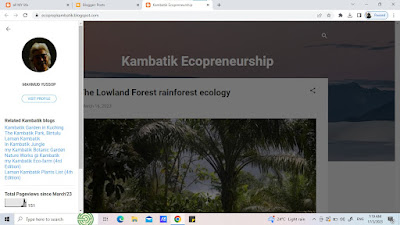Pinnacle of passions

Away in Kuching on this March Escapade’23, I have a good overall view of what I have done in Bintulu on the Kambatik Park. Sometimes we need moments of detachment to figure out all what has been done at the nature park and evaluate it for better understanding and focus, and then what’s next? As a project that has taken more than ten years of development, I can say that it is the culmination of many strengths. Firstly, the project has to be sustainable before any further commitment can be poured into its further investment in terms of time, efforts, funds and future planning. To this end I can safely say that this has been achieved as I have managed to stay on with the project and passionate about it despite having to juggle time, money and efforts on daily basis to care for the place till presently. One thing that I have done in Kuching on this trip is to create a new blog called “Kambatik Ecopreneurship”. With some major success being...




